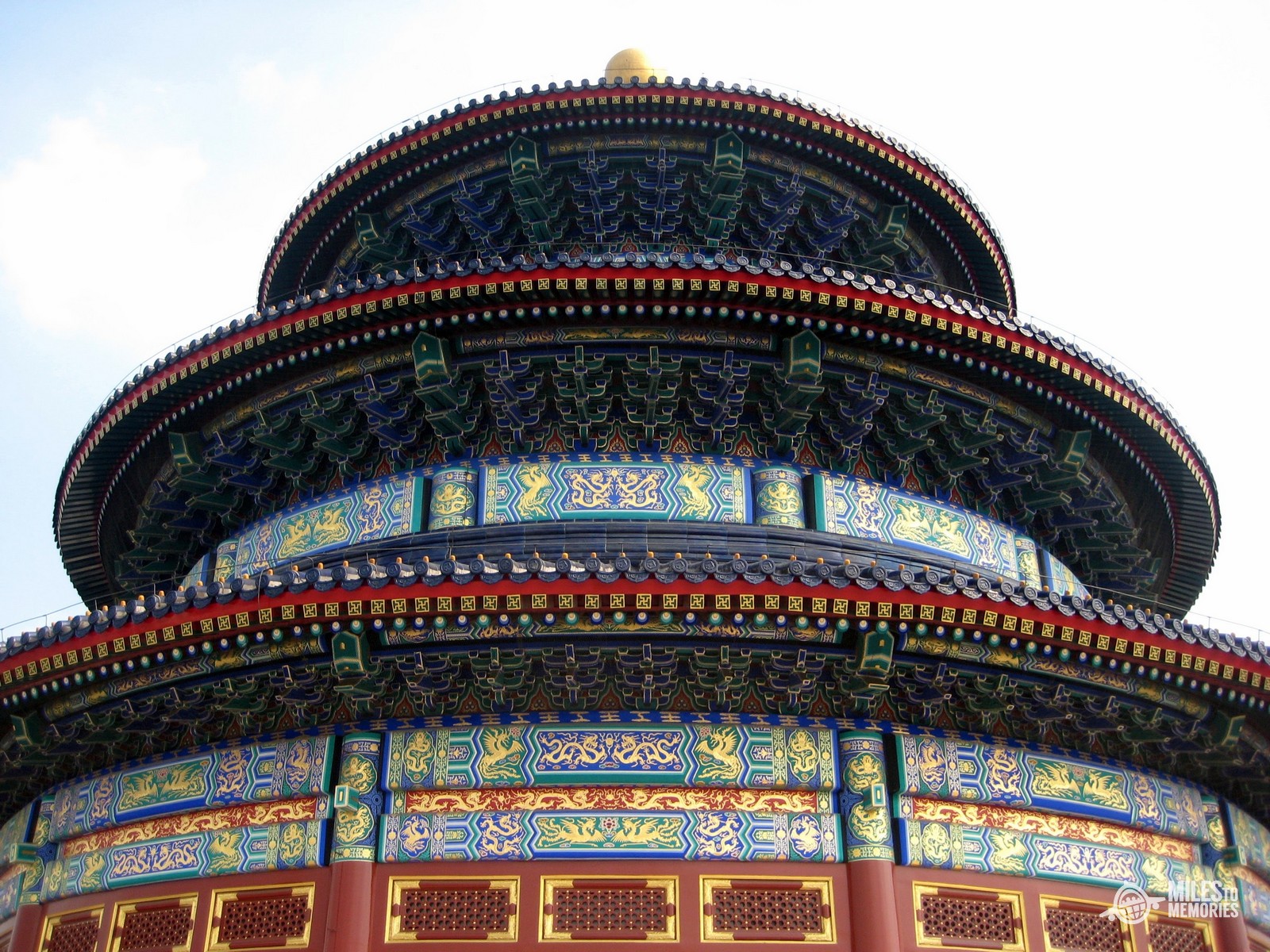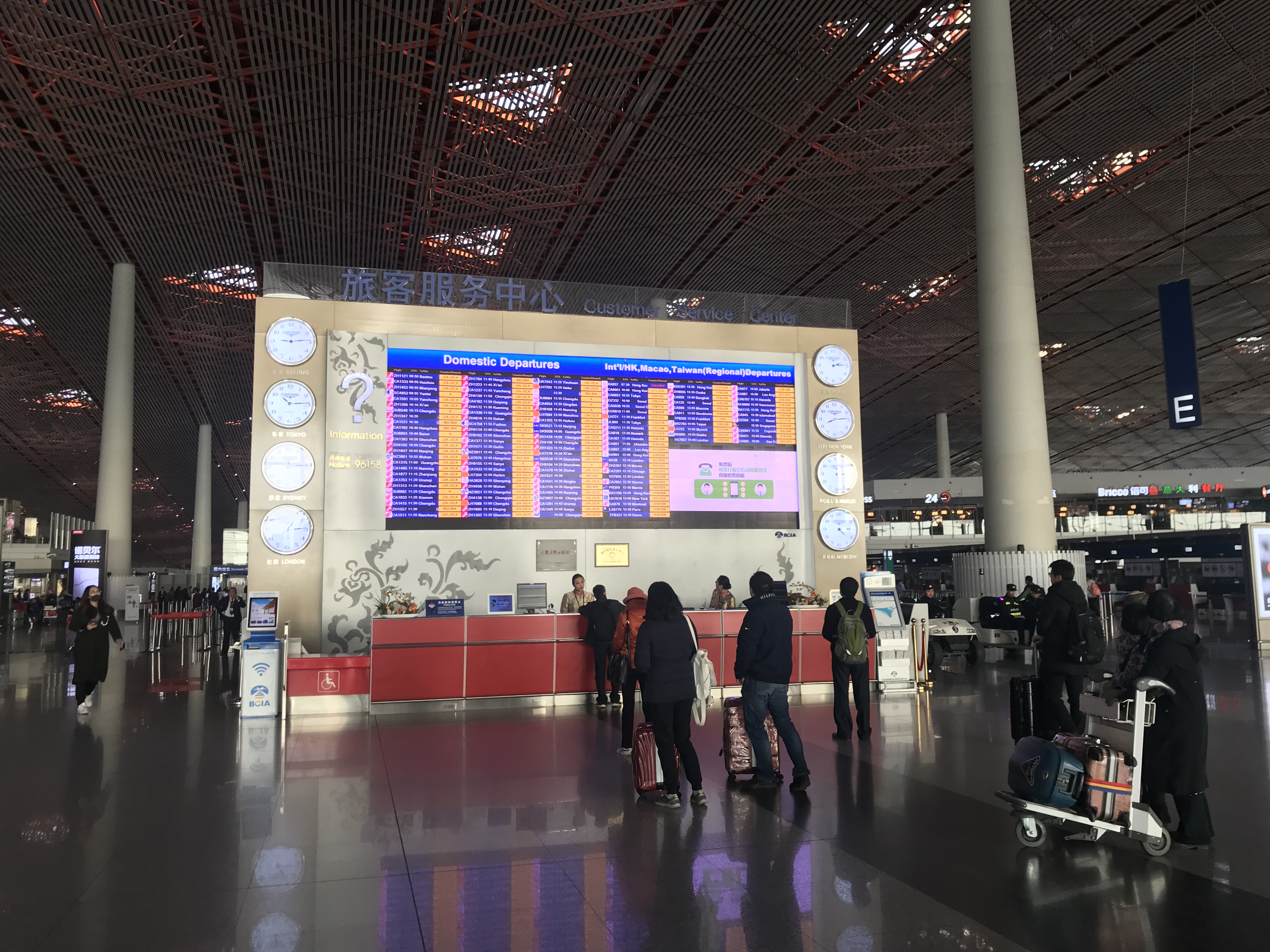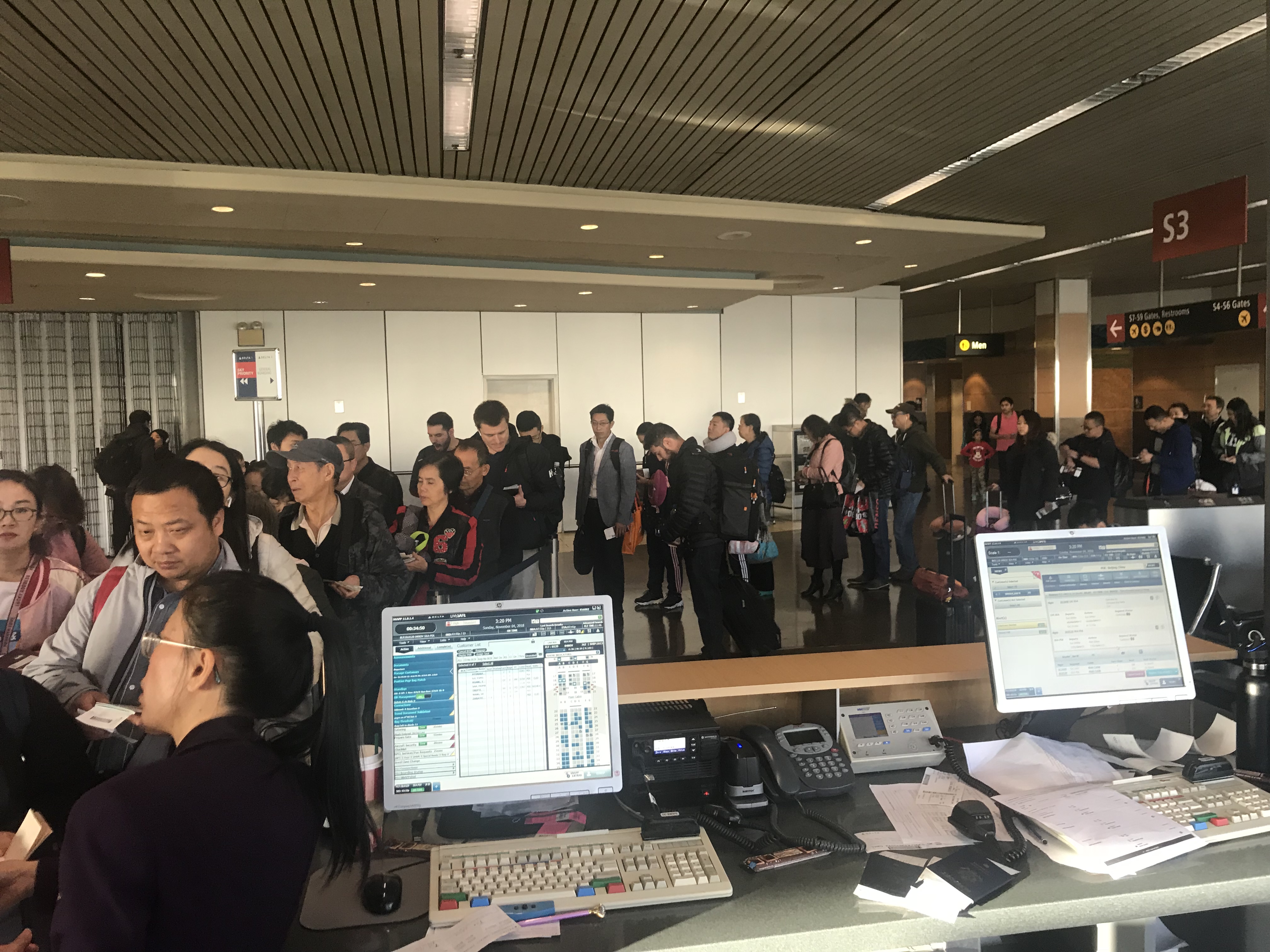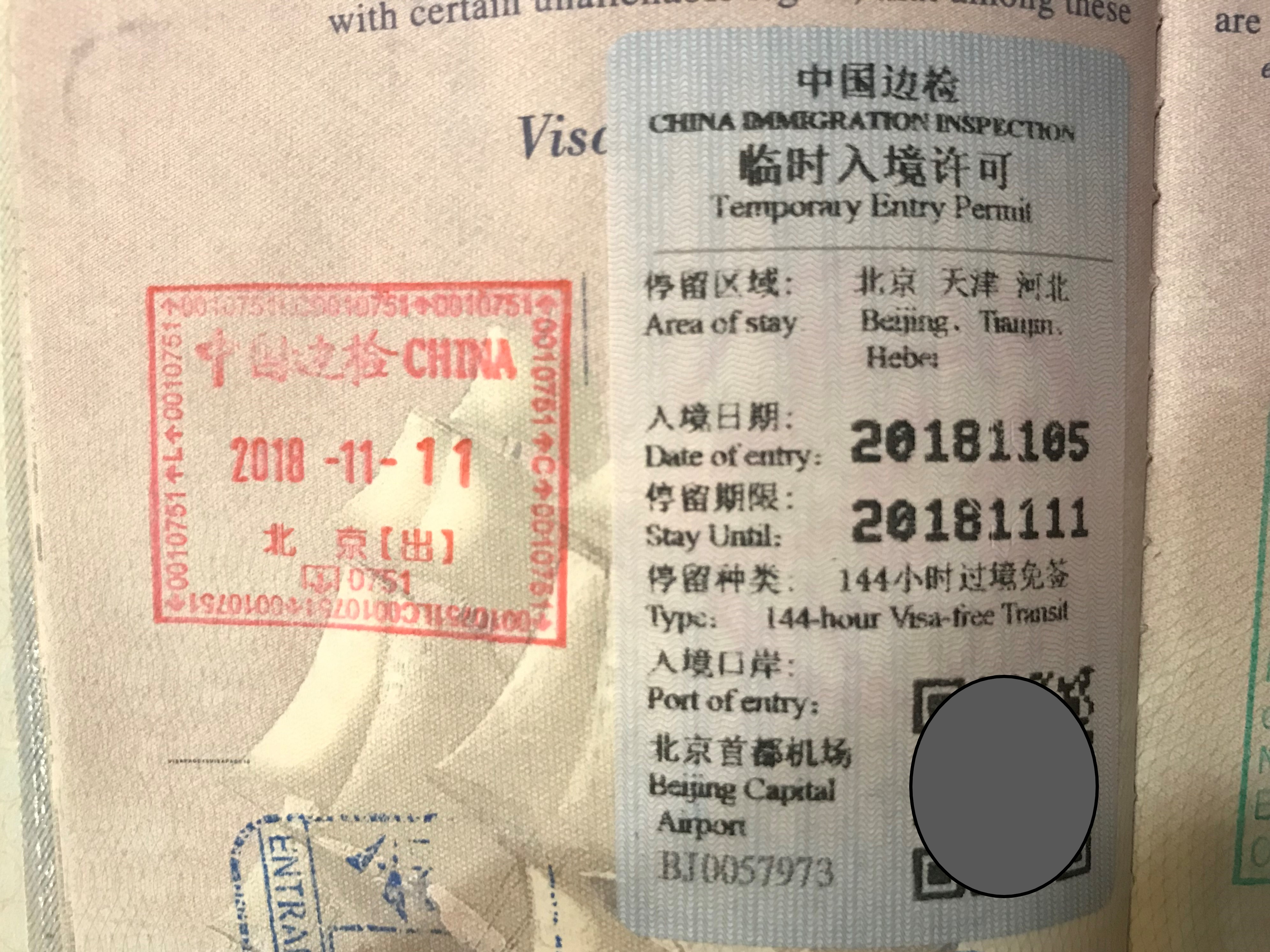
Beijing Transit Without Visa: Everything You Need to Know
Immigration into a foreign country can be a bit nerve-wracking, especially if it is your first time. Most don’t intimidate me, but our entry into China was one that did. When my older kids and I visited Beijing last fall, we entered using the 144-hour China “transit without visa” (TWOV) policy.
The Basics of China’s Transit Without Visa
For the typical tourist visit as a U.S. citizen, China requires a visa ahead of time. You must apply, pay the $160 fee, and have it processed by a Chinese consulate. This is time consuming and costly, not to mention a bit of a headache.
China’s transit without visa policy avoids all this. While China offers 24-hour transit without visa for long layovers, their 72-hour and 144-hour TWOV are different. The TWOV requires some careful planning. First, you must hold a passport from one of the 53 countries on the approved list (includes the U.S., UK, Canada, Mexico, and Schengen countries).
Second, you cannot simply book a ticket to China and expect to enter the country. The Chinese transit without visa policy only works if you’re continuing on to a third country. You may stop in China, but you can’t simply return to your point of origin. That’s not a transit.
Essentially, you must depart from country A, arrive in China (country B), and later depart for country C. The flights into and out of China must be nonstop, without additional domestic connections within China. An example itinerary is the following:
- Nonstop flight from LAX to PVG (Shanghai Pudong International Airport)
- Stop in Shanghai for 3 days
- Continuing nonstop flight to Bangkok, where you spend 5 days
- Return to LAX via Shanghai
These sorts of tickets are available all the time, and many Chinese airlines don’t charge any more for the planned stop. I’ve seen the exact itinerary I mention available for ~$450 out of LAX on China Eastern, which is a fantastic deal for a two-stop ticket.

Which Cities Allow TWOV?
Different Chinese cities offer different transit visa times. The original multi-day transit visas offered a stay of up to 72 hours. However, this has been increased to 144-hours in several locations, including Beijing. In addition, you can freely travel within both the Tianjin and Hebei provinces as well as the capital city. Some other cities restrict you to the single city to the city boundary. Here is the current full list of 72-hour TWOV cities:
- Changsha (can travel all of Hunan province)
- Chongqing
- Guilin
- Harbin
- Xi’an/Xianyang (cannot leave these cities)
Here is the current full list of 144-hour TWOV cities:
- Beijing/Tianjin (can travel all of Hebei, too)
- Chengdu
- Dailan (can travel all of Liaoning province)
- Guangzhou (can travel all of Guangdong province)
- Hangzhou
- Kunming
- Nanjing
- Qingdao (can travel all of Shandong province)
- Qinhuangdao
- Shanghai
- Shenyang (can travel all of Liaoning province)
- Shijiazhuang
- Wuhan
- Xiamen
If arriving into Shanghai, Zhejiang, or Jiangsu provinces, you can travel freely between all three of these. You must enter via an international airport.

Planning our Beijing Transit without Visa
When I was booking our flights to China I *really* wanted to make sure I didn’t mess up our planned Beijing transit without visa. Our itinerary was as follows:
- Domestic connection to a nonstop Delta from from Seattle to Beijing
- 6-nights and 6-days spent in Beijing
- Onward nonstop flight from Beijing to Hong Kong
- 3 days in Hong Kong
- Flight home to San Francisco
There were a few ingredients to our particular flights plans that caused me some anxiety. First, I’d booked two separate one-way tickets. We were flying on a one-way Delta cash ticket to Beijing, followed by a Cathay Pacific ticket coming home. Some sources I read stated that you need to book everything as one ticket in order to qualify.
However, others stated that this isn’t the case. You must simply have the onward travel booked. I finally found an authoritative source that confirmed this.
The second issue was the onward flight. We were flying from Beijing to Hong Kong. Hong Kong is technically part of China, just administered differently. I was worried that it wouldn’t qualify for the transit without visa. My fears were unjustified, as China clearly states that Hong Kong is a valid destination for onward travel in regard to TWOV (in addition to Macau and Taiwan).
Finally, our Cathay itinerary was booked as a one-way Alaska award with a stopover. It *might* appear that we weren’t really transiting. After all, our planned time in Beijing was longer than our time in Hong Kong. But this didn’t prove to be an issue either. It took some last minute data entry (and much confusion) at the gate in Seattle, but with the Cathay flight details for our PEK-HKG pulled up on my phone, we were finally cleared to board by Delta. You’ll need to inform whatever airline you book that you intend to use the TWOV.

Arrival into Beijing
In our hurry to head to the Foreigner line, we missed the “transit without visa” signage and desk. I’d read that you had to grab the paperwork, but it slipped my mind at we shuffled along in the line in a dazed stupor. A sleepless 12-hour flight on a 767 utterly exhausts you.
The immigration official kindly sent us over to the correct desk when she realized we didn’t have the right form. The China transit without visa form is blue while the standard entry card is yellow. Delta didn’t pass out any blue forms on board, so we had to get them at the desk and fill them out there.
On a second transit without visa this year (through Xiamen, not Beijing), I mentioned to the cabin crew that we needed the transit card. They had these on board and brought us the correct cards. Make sure you tell the airline at check-in (and I also suggest your cabin crew) your intent to use the TWOV.
Transit Without Visa Application
The temporary visa desk at PEK Terminal 2 is located off to the right in a corner beyond the entry queues to the Chinese National and foreigner immigration lines. They have the TWOV cards there for you to fill out and then present it to an immigration official.
We had to show confirmation of our onward travel when I brought the cards to the desk. Unlike our experience boarding our flight to Beijing where she wanted actual ticket numbers, a printout of the page with our names, seats and PNR was sufficient. I would play it safe and ensure you have the actual ticket numbers, as that is what Delta wanted.
The immigration official processed our applications one by one. I had to fill out three, one for myself and one for each of my two kids. The result was a temporary transit permit affixed in our passports clearly showing November 5 as the arrival date and November 11 as the departure date.

Afterwards, she is waved us to a separate line that was much shorter than the general foreigner queue. Even with the time spent standing in line the first time, the whole process took maybe 20 minutes.
Onward Travel to Hong Kong
We didn’t have any issues leaving Beijing. The two immigration officials processing us as we passed through customs and immigration at PEK gave us some weird looks, but that was it. Most of this I chalk up to white dad traveling with two of his beautiful brown-skinned kids.
One thing to note is that you’re supposed to keep the stub from your TWOV arrival form with you at all times during your stay, as you must present it when you leave. At least that is what it says on the form. We were not asked for the stub, but I would not ever take a chance.
Make sure you do not overstay your 144-hour transit time! I pushed ours as far as I was comfortable, with a planned departure only 8 hours shy of our 144 hours after we’d landed in Beijing. Some airports also give you 72 of 144 hours from midnight following the day you land. I didn’t even want to research and play games with this and decided to stick to the strict 144-hour window. It could be worth looking into which airports allow this.
Schedule changes can ruin plans. If the airline moves your flight so that you exceed the 72-hour or 144-hour window, you can be denied entry, and the airline may do nothing for you. What matters is scheduled time, though. If your flight is delayed and you don’t depart China on time, there should be no issue, as long as you were scheduled to depart before your TWOV window expires.
Conclusion
Utilizing the China transit without visa policy is a great way to visit China while still saving some serious money, especially for a family. Rather than paying $160 per person (plus the hassle of a trip to get them) for visas, we were able to spend a full five days in Beijing using the free TWOV policy.
China is continuing to roll out their transit without visa policy beyond major airports such as Beijing and Shanghai. The count of cities enjoying either a 72-hour or 144-hour TWOV policy is up to 14+ cities, and in many cases you can travel whole provinces. Consider adding a stop in China on your next trip to Asia!



Thanks for the great info. Here’s my proposed itinerary and I’m pretty sure from everything I’ve read it would qualify for the TWOV:
SFO – PVG (four days in Shanghai) – NRT (two or three days in Tokyo) – PVG – SFO (same day or overnight in Shanghai if needed)
I’ll be using the Chase portal to book tickets (2) on United for the SFO – PVG trip. I’ll get the 50% bump in value and I’m closing in on 1MM on United. I’ll look for least expensive R/T PVG – NRT and use my $300 credit, don’t have a carrier preference.
Question 1 – am I correct this qualifies?
Question 2 – any overall comments on the itinerary? In case it isn’t obvious the main reason for the trip is to hit the Disney parks in both countries.
At face value, that itinerary should qualify. You are entering on a nonstop flight from the U.S. and departing onward to Tokyo.
My one comment is the recent reports I’ve been hearing. More often, I’ve heard of travelers trying to use the 144-hour TWOV being denied. It is at the discretion of the immigration official, and with all documentation in order, they typically welcome in foreigners under the TWOV. I would do some research and see if you have any “red flags” that may get you denied.
During our trip in November 2018, we obviously didn’t have any issues.
Hi Ian — thank you so much for the blog post. I have a question: I just called Delta and no one seemed to know about the 144-hr TWOV. I’m afraid that will be the case at the airport as well, and they won’t allow me to board the plane, despite me having an onward ticket to Japan within 5 days. What did you do/say/bring as proof to make Delta recognize the 144-hr TWOV and allow you to board the plane?
Where did you find the ‘ authoritative source’ stating flights do no need to be on one booking. American airline is refusing to board us from JFK to Beijing flight because Beijing to Macau was not booked thru them but with Air Macau.
TYIA.
I have transited a couple of times and that is not a requirement. I would immediately ask to speak to an Operations Manager to get it cleared up. Here is a link to the Chinese Embassy’s website. It lists the requirements.
https://china.usembassy-china.org.cn/u-s-citizen-services/local-resources-of-u-s-citizens/information-chinese-visas/
“Transiting without a visa requires a valid passport, a visa for your onward destination (if necessary), and an onward plane ticket departing from the same airport.”
I didnt understand the part why delta needed your cathey ticket numbers and why the airlines needs to know you will take the twov? I just arrived on a one way from busan (korea) and air china didnt know about my onward ticket. Yes at the TWOV desk they didnt expect me but its no problem. I never had to advise airline in advance.
Anyhow. Now I fly to Pyongyang 🙂 (with a nice visa sticker in pasport nit those loose things) and back will use the same and I doubt Air Koryo will advise anything.
Delta would get in trouble (i.e. fined) if they transported me to Beijing without a valid visa or transit plan. I expected this would be the case. United wouldn’t fly us to Costa Rica in 2017 without a return ticket booked.
For them to do so, they required the ticket numbers. What I didn’t expect was needing *more* than a simple confirmation code (PNR).
Honestly it’s so easy to get the 10 year Chinese visa. Provided you have the correct passport. Why not just get the visa instead of doing this. Have gotten mine and a friend’s in Hanoi and BKK. Got it in less then 24 hours to.
For us, it’s a drive to the nearest consulate, plus $160×3. Too much added cost, when a little planning can still get you a great trip.
Or use the mail in service I think it’s called mychinavisa in the US. Wayyy to many rules and loopholes. I’ve had friends denied entry trying to do this. And if you are a budget traveler with this sort of entry into china. If you stay at dirt cheap Chinese hotels from trip.com they may not know how to register you. Chain hotels won’t have this issue. But again that was a few years ago. So maybe they have improved. Plus lots of the dirt cheap flights to South east Asia stop over in china. And when you have the visa your stop over experience is much greater. At least last year in CAN you can’t get access to any lounge. And a few of them are actually decent.Also KUM often you have a overnight layover. You can’t go outside the airport to any of those hotels without visa. The hotels surrounding the airport are much better then the crappy one for 800 Yuan a night in the terminal. Sorry to get off topic. Should say. If you do any sort of traveling in Asia. A 10 year Chinese visa is a must. Even if you are not planning any china trips in the near future :))
I can see that. But for transits in the biggest cities like Shanghai and Beijing, the TWOV is a very regular thing. Sure, immigration can always deny you. But this is not typical.
Missing some key information:
Flight into and out of TwoV airport must be direct. If the flight makes any other stops in China, even if you dont get off the plane, you are limited to 24 hours total in China.
Different airports count time different ways. Some use 72 hours literally. Others give you until midnight on the 4th day.
Schedule changes can ruin your trip. If the airline changes your flight time, and you end up outside the 72 hour mark(or after midnight in airports that give you till midnight) you will be denied entry and the airline may take no responsibility. It’s all scheduled time though, being late/early makes no difference if the scheduled times do not change.
You can be denied entry to the country. It’s up the the immigration official. PEK often denies entry for people with less than a 12 hour layover, on a case by case basis.
Only US citizens have to pay $160. Other passports can get much cheaper visas. US citizens get a 10 year multi entry visa, which can be pretty useful.
This is a U.S.-centric view, I admit. I knew they hose us in terms of fees.
I did mention the nonstop requirement in and out of country using TWOV, but just called it out more so people are sure not to miss it.